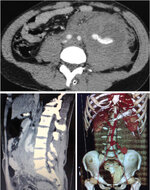It's well accepted that death from significant blood loss can occur in about 2-5 minutes, depending on the severity and location of trauma. The average heart at rest pumps 5 liters of blood per minute. We have 5-6 liters of blood in our system; the loss of 30-40 % of it leads to hypovolaemic shock. While the body performs some remarkable actions to help control bleeding, once our plumbing system springs a major leak, a clock is started, and one must stop the leak before one becomes unconscious and dies.
The biggest issue I see is that even a small leak in our plumbing can create a significant mess and often appears worse than it actually is. However, the knowledge and skills to determine that are not what people want to spend their time on. They instead want to carry their TQ like a merit badge for everyone to see, so that they are perceived as that person, when in most cases, they are not that person. Or in the case of this article, its combat with limited leadership, poor training, and prolonged access to higher medical care..
TQs do save lives and have a place, but they are simply a tool that needs to be used correctly.


